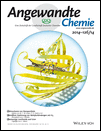Ozonated Graphene Oxide Film as a Proton-Exchange Membrane†
Support from the Office of Energy Efficiency and Renewable Energy of the U.S. Department of Energy (DOE) through the Fuel Cell Technologies Office and from Los Alamos National Laboratory through the Laboratory Directed Research and Development (LDRD) program and a Director’s Postdoctoral Fellowship for W.G. is gratefully acknowledged. This work was done in part at the Center for Integrated Nanotechnologies, an Office of Science User Facility operated for the U.S. DOE Office of Science by Los Alamos National Laboratory and Sandia National Laboratories. This research was supported in part by Oak Ridge National Laboratory’s Center for Nanophase Materials Sciences (CNMS), which is sponsored by the Scientific User Facilities Division, Office of Basic Energy Sciences, US DOE.
Abstract
Graphene oxide (GO) contains several chemical functional groups that are attached to the graphite basal plane and can be manipulated to tailor GO for specific applications. It is now revealed that the reaction of GO with ozone results in a high level of oxidation, which leads to significantly improved ionic (protonic) conductivity of the GO. Freestanding ozonated GO films were synthesized and used as efficient polymer electrolyte fuel cell membranes. The increase in protonic conductivity of the ozonated GO originates from enhanced proton hopping, which is due to the higher content of oxygenated functional groups in the basal planes and edges of ozonated GO as well as the morphology changes in GO that are caused by ozonation. The results of this study demonstrate that the modification of dispersed GO presents a powerful opportunity for optimizing a nanoscale material for proton-exchange membranes.




